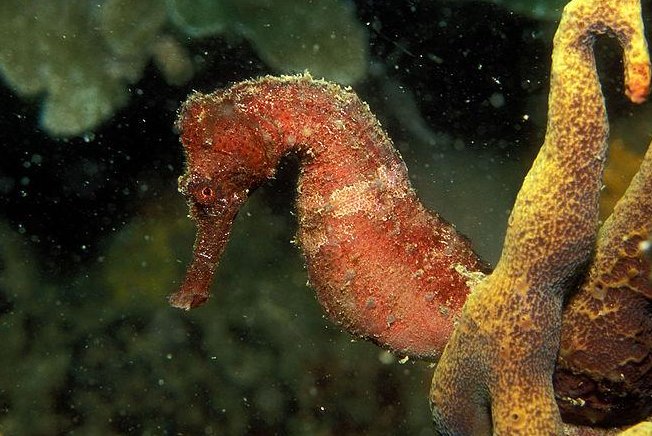A seahorse. (CC/Laszlo Ilyes)
Nov. 26 (UPI) -- Marine scientists at the University of Texas at Austin say seahorses have heads perfectly designed to sneak up on prey without making waves as they move.
Seahorses feed on copepods, which are extremely small crustaceans. The copepods can detect any waves produced in advance of an attack and escape from their predator at 500 body lengths per second, which is equivalent to a six-foot person swimming underwater at 2000 mph.
“A seahorse is one the slowest swimming fish that we know of, but it’s able to capture prey that swim at incredible speeds for their size,” said Brad Gemmell, research associate at the University of Texas Marine Science Institute.
Seahorses have a 90 percent success rate capturing their prey and this success can be attributed to the ability to overcome the sensory abilities of their prey.
The researchers used a microscope fitted with a laser and a high-speed digital camera to track the rapid movements of the the copepods. This technique showed that the seahorse's head was designed to minimize the disturbance of water before it strikes.
The seahorse has a "no wake zone" above and near its nostrils, and it tilts its head towards its prey to reduce water disturbance. The research is published in Nature Communications.
Seahorses feed using a method called pivot feeding, in which they rotate their heads and draw in the prey with suction, and this suction only works at short distances. Reducing water disturbance allows the seahorse to get as close as possible before striking. The seahorse takes 1 millisecond to strike, while the copepod's response takes 2 to 3 milliseconds.
“It’s like an arms race between predator and prey, and the seahorse has developed a good method for getting close enough so that their striking distance is very short,” Gemmell said.
[University of Texas at Austin]
[Nature Communications]















